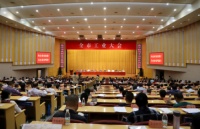家居业“反卷”新战:价值为王,品牌立潮头
Home Improvement Industry: Challenges and Opportunities Amidst Market Downturn Home Improvement Industry: Challenges and Opportunities Amidst Market Downturn
Due to the downward trend in the real estate market, the home improvement industry has also been dragged into a quagmire.老板失联, bankruptcy, store closures, and other chaotic phenomena are emerging in an endless stream, including some well-known enterprises. According to data from 无破终端, the number of home improvement companies declared bankruptcy in 2024 and the first half of 2025 was 440 and 132 respectively, with an average of about 1.36 days between each bankruptcy.
The industry's cold winter is far from over, and under the wave of "involution," everyone is in a state of anxiety. Many home improvement companies are willing to sacrifice profit margins to retain customers, engage in low-price attraction, and the price war is getting more intense.
However, even head brands with certain scale advantages cannot consolidate their position or achieve growth through the burning money model. The market has proven that engaging in price wars is not a long-term solution, and "恶性 competition" does not conform to the laws of development and is not beneficial to the healthy development of the industry.
The wave of bankruptcy is sweeping across the industry, and the successive tragedies have forced us to re-examine our market strategies. With the basic needs unchanged, why has the home improvement industry reached this point?
What are the causes?
Looking outward, it is undoubtedly the weakening of the real estate industry that is the main reason for the turmoil in the home improvement industry. The slowdown in new house sales and the decline in the volume of second-hand house transactions have both shown a year-on-year decline trend. The increase in housing stock is decreasing, and "renovation and partial transformation" has become the mainstream market, and the volume of transactions has also shrunk.
In the first 11 months of 2024, multiple core indicators of the Chinese real estate market continued to decline, with the sales area of commercial housing, investment in development, and new construction area all showing negative growth year-on-year.
Data shows that the sales area of commercial housing decreased by 14.3% year-on-year to 8.6 billion square meters; the investment in real estate development decreased by 10.4% year-on-year to 9.4 trillion yuan; and the new construction area decreased by 23.0% year-on-year to 6.7 billion square meters. These data indicate that the overall demand in the real estate market is continuously shrinking, which directly affects the development of the home improvement industry.
Traditional home improvement industries are overly dependent on the flow红利 brought by upstream industries, and once enterprises form an inertia development model, it is difficult for them to walk independently. Many enterprises did not seize the best transformation period, refocus their perspective on the existing market, and were forced to reform later, making it difficult to move forward.
Looking inward, the market competition is fierce, the industry is reshuffling, and product homogenization is serious. After disconnecting from the real estate industry, the cold flow has caused home improvement companies to be unprepared, and they have made significant reforms, with new concepts such as "large home," "whole house customization," and so on emerging in an endless stream.
Brands want to expand scale and stabilize growth, so they try their best to broaden the track, cross the border, increase stores, and thus become busy and neglect the original advantages. All-in marketing ignores delivery and after-sales service, damaging brand reputation and causing serious consumer trust crisis.
At the same time, factors such as rising raw material costs, blind pursuit of price wars, and not adapting to consumer needs are also factors that have led to the elimination of some enterprises.
Who are the winners?
The home improvement industry has entered a so-called "shaking period," and price wars do exist. However, under the background of weak demand and market contraction, "price competition" seems to be a short-term shortcut to stimulate sales, but in fact, it is like a blunt knife cutting flesh, and the result will only drag the home improvement industry from "high-priced unsold" to "low-priced low-profit," and a large number of enterprises are still difficult to escape from the fate of withdrawal and marginalization.
So, under the fierce price war, are consumers the real winners?
The answer is not necessarily.
According to data from the China Consumer Association, in terms of the amount of complaints in commodity categories, in 2024, the number of complaints in the home appliances category was 213,779, accounting for a proportion of 12.13%, with a year-on-year increase of 0.23%, ranking first in the amount of complaints. The furniture category ranked eighth, with 33,822 complaints, an increase of 20.95% from 2023.
Despite the stacking of national subsidies, platform subsidies, and so-called merchant benefits, consumers have not received home products that are both good in quality and affordable, not to mention a good shopping experience.
In order to survive in the long-term price war, home improvement companies have only two choices: changing materials and channels in the supply chain; and closing stores and cutting after-sales service in the marketing link.
Home giants with larger scale advantages and supply chain advantages can allow for profit margins while ensuring costs, but for small and medium-sized enterprises, it means that they have to sacrifice certain product quality and service quality to make up for profit margins, and even directly give up profits.
Under the premise of legal and compliant selection of materials and materials, the space for product cost reduction is limited, and many enterprises can only achieve cost reduction by giving up delivery experience. Correspondingly, the losses they may face are perhaps even greater losses, such as cancellations and complaints, which are a fatal blow to the enterprise in today's increasingly aware consumer sovereignty.
Will the leading brands be the winners of the price war?
In the past, home brands have already formed a high-end positioning in the hearts of consumers. Once the brand merchant suddenly lowers the price, on the one hand, it will make users doubt the value of the product, "it is difficult to go from frugality to extravagance," and it will be difficult to return to the normal price level in the future; on the other hand, the brand image shaped by a large amount of marketing costs in the early stage will collapse, and the fluctuating pricing will lead to blurred brand positioning, weakening the original advantages, and gradually losing the memory point in the user's mind.
In the long run, "price wars" are merely a means of seeking the end by means of the means, and by lowering or sacrificing profits to win a few price-oriented customers, on the one hand, it cannot bring significant growth, and on the other hand, it is also difficult to cultivate loyal customers and consolidate brand reputation.
Where is the way out?
Is the home improvement industry at a dead end with overcapacity, shrinking demand, and weakened expectations? The answer is no.
In recent years, the "ailment" of the home improvement industry lies in the fact that it has been solely focused on growth and has ignored the real needs of consumers. The entire industry has been in a state of impatience and rashness, leading to chaotic phenomena and successive tragedies.
When in trouble, change is the way out. At present, the "involution" in the industry has almost reached its peak, with large-scale stores closing one after another, and small and medium-sized enterprises are unable to bear the burden. All these phenomena indicate that engaging in price competition is only a dead end.
The era of incremental growth has passed, but it does not mean that the basic needs of the home improvement industry have changed. The renovation of second-hand houses, partial upgrades, and aging transformation still contain many growth points worth exploring in the existing market. The future direction of industry change must be from price competition to value competition.
While pursuing cost reduction and efficiency, home improvement companies must not only focus on short-term cost reduction but also pay attention to long-term sustainable development.
Compared with blind expansion, the more certain growth opportunity lies in concentrating resources to amplify the advantages of single products and do the service experience to the extreme. Enterprises must be clear: creating value for consumers is the ultimate goal, not serving dealers, not relying on channel profit margins.
Take Lin's Home, Yuan's Wood Language, Ji Mu, and other brands that are still ranking on the list of 618 this year as examples. These leading brands choose the first national-scale home improvement service platform Wan Shifu as a strong backer while focusing on product upgrading, always putting consumer experience first, and ensuring that consumers across the country can achieve "what they buy is what they get" in the first time.
As the only recommended service platform by IKEA, Wan Shifu's NPS (Net Promoter Score) reaches 92, leading the service industry by 18.8. In March this year, Wan Shifu won the "Annual Best Installation Platform Partner" award from Lin's Home, becoming the only service platform to win the award. Whether it is coverage, delivery time, completion effect, or customer satisfaction, it is all in the first place.
Service delivery is the most intuitive and profound part of home consumption for users, and service quality is directly related to brand reputation. In order to go a long way, enterprises cannot lose sight of the big picture.
No matter how the external environment changes, doing a good job and doing a long job is a common theme, which has nothing to do with the size of the enterprise. In today's increasingly fierce competition, why not keep a calm mind, actively withdraw from the fierce battle of price competition, keep the original intention, return to reason, find the right path, and cultivate internal skills? The premise of creating value for users is to affirm the value of your own existence.
相关知识
涨价!富轩全屋门窗打响门窗行业“反内卷”第一枪,连甩两款“899性能王炸”新品!
家居行业“反卷之战”:聚焦价值创造,挖掘品牌优势
富轩门窗涨价,899新品引领行业“反内卷”
乘风破浪,潮头立:联塑为高考学子献上的四字箴言
被家居消费战卷到了!大自然线上线下焕新盛典震撼来袭
富轩全屋门窗打响门窗行业“反内卷”第一枪,连甩两款“899性能王炸”新品!
《“勇立潮头 永无止境”金隅天坛整装即将开启行业“新潮流”》
这个双十一“真的!券到了”,林氏家居新零售卷王升级“整活”双11
破卷拓新 同频共生 | 日丰卫浴2025年全国代理商峰会圆满召开!
以创新乘风破浪 用品质勇立潮头 全友五度荣膺“金麦品质奖”
网址: 家居业“反卷”新战:价值为王,品牌立潮头 http://www.jiajubaike.cn/newsview129223.html
推荐即时动态

- 1自建房造价多少钱一平米 2 24995
- 2重磅出击▏欧嘉全屋定制荣获“ 17289
- 3属鼠和属兔的合不合 属鼠的和 16417
- 4大角鹿瓷砖 8438
- 5天天315,品质365!看联 6230
- 6卢森地板2022新品触感系列 6182
- 7骊住水科技第四届进博会访谈实 5710
- 8爱情数字代表的意思大全 恋爱 5696
- 9属鸡男与属鼠女相配吗 属鸡男 5035
- 10世外康养 设计中国度假式居家 4896








